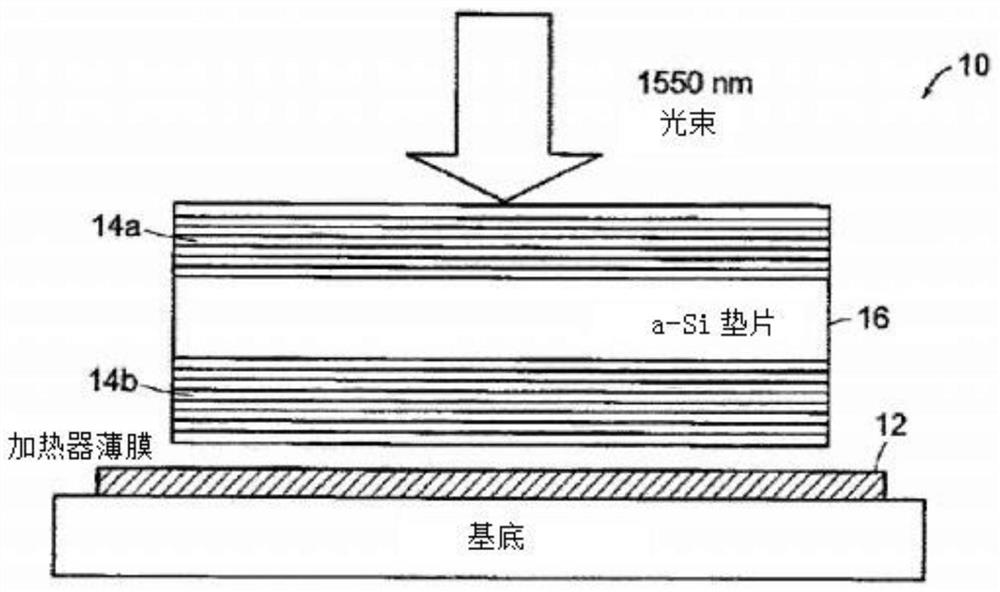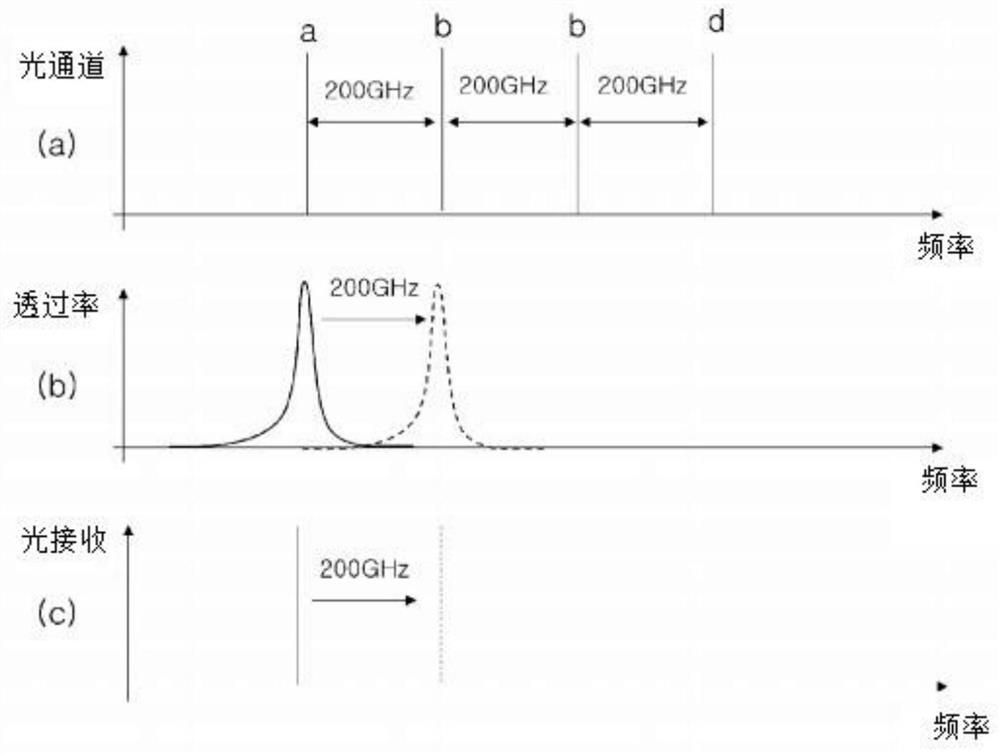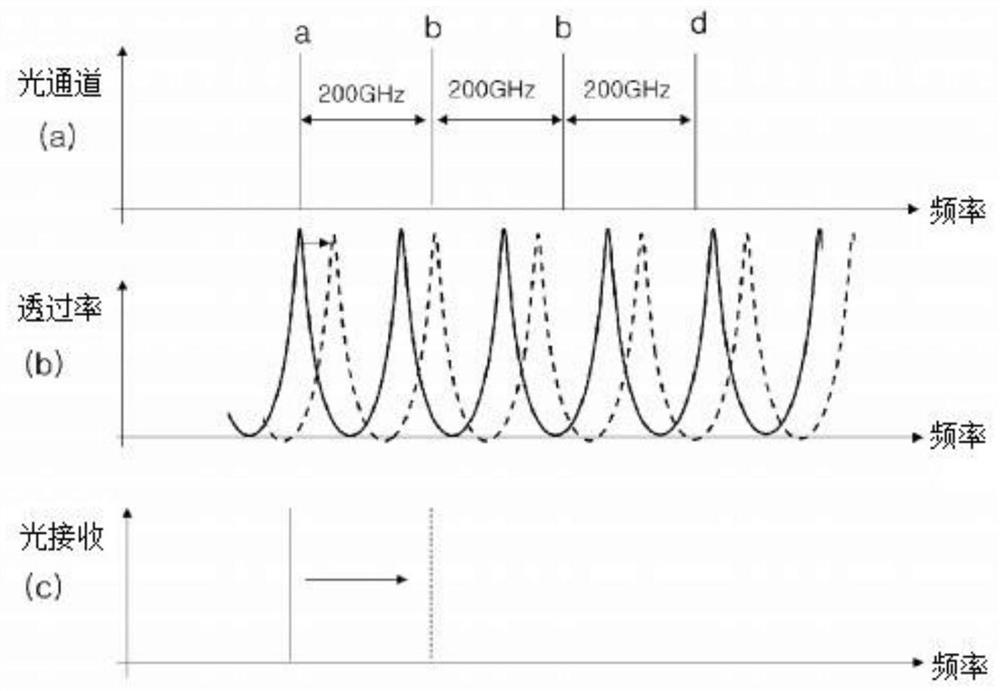Optical Receiver Utilizing Wavelength Tunable Filters
A technology of optical receivers and filters, applied in electromagnetic receivers, instruments, optics, etc., can solve the problems of easy temperature stability of adhesives and the inability to use epoxy, etc., and achieve fast wavelength variable characteristics, easy Adjust wavelength, apply easy effects
- Summary
- Abstract
- Description
- Claims
- Application Information
AI Technical Summary
Problems solved by technology
Method used
Image
Examples
Embodiment Construction
[0068] Hereinafter, non-limiting preferred embodiments of the present invention will be described in detail with reference to the accompanying drawings.
[0069] figure 2 This is a conceptual diagram showing the process of selecting a desired optical channel in a conventional optical receiver using a wavelength tunable filter. figure 2 In order to facilitate the understanding of the present invention, an optical channel having four wavelengths is used, the frequency interval of each channel is exemplified as 200 GHz, and the four optical channels are respectively named a, b, c, and d for description.
[0070] figure 2 (a) It shows the state in which four optical channels a, b, c, and d are arranged at a frequency interval of 200 GHz. figure 2 (b) The transmission characteristic of the conventional wavelength tunable filter is illustrated. When the conventional wavelength tunable filter has the transmission characteristic of the frequency indicated by the solid line (left...
PUM
 Login to View More
Login to View More Abstract
Description
Claims
Application Information
 Login to View More
Login to View More - R&D
- Intellectual Property
- Life Sciences
- Materials
- Tech Scout
- Unparalleled Data Quality
- Higher Quality Content
- 60% Fewer Hallucinations
Browse by: Latest US Patents, China's latest patents, Technical Efficacy Thesaurus, Application Domain, Technology Topic, Popular Technical Reports.
© 2025 PatSnap. All rights reserved.Legal|Privacy policy|Modern Slavery Act Transparency Statement|Sitemap|About US| Contact US: help@patsnap.com



